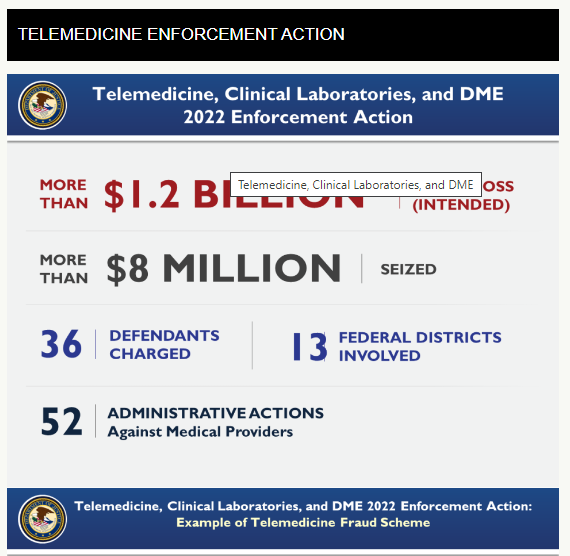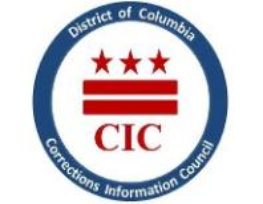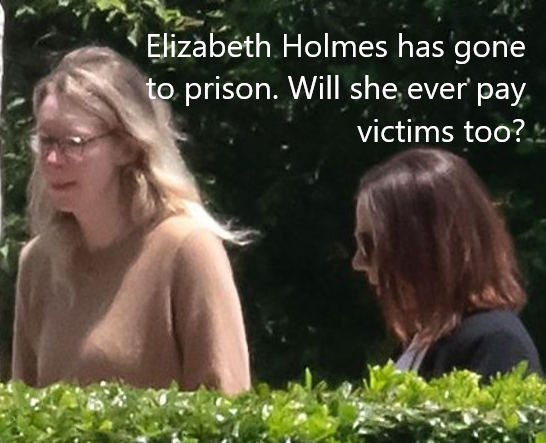THE SENTENCING HEARING: Is Your Client Prepared to Speak with Their ⚖️Judge?
What is the ‘1’ Thing that Differentiates Them from Everyone Else Entering Their Judge’s Courtroom?
Facing America’s Criminal Justice System for the first time is a life-altering, surreal, and frightening experience. The importance of preparation and working with your legal team before the presentence interview cannot be overstated.
Once this has all been completed, as an attorney, you’ve prepped your client right up to their sentencing hearing.
Then, after sentencing, there still are a lot of fears and unknowns as they face either their self-surrender date or are remanded at that time.
Attorneys know the law, but the nuances of navigating through Federal Prison aren’t traditionally part of a legal defense. This requires a unique set of knowledge and skills that interest those responsible for assessing their freedoms.
STAKEHOLDERS are part of the system that controls everything that happens following the guilty verdict and until you’re released from the Federal Bureau of Prisons. They are responsible for keeping society safe by reducing criminogenic needs for those who will eventually be released. From the Judge to the BOP Case Manager and Unit Team, to the Probation Officer on Supervised Release, and then possibly back again to the Judge to get off Supervised Release early, at each stage, these STAKEHOLDERS make decisions that impact your client’s future.
Realize that even if you’re doing everything right from the start, the only person you can control is – you, and still, there will be disappointments. Therefore, being prepared at every stage, keeping your eyes open with a positive attitude, and continuing to add to your Reentry Plan are all ingredients needed for getting home to your loved ones. Remember: No Cell Phones, No Trouble, and No Infractions.
YOUR STAKEHOLDERS
1. Your Judge, who already knows that;
- Your Attorney is paid to keep you out of prison or, at best, spend the least time “in prison.”
- The Probation Officer will conduct their interview, draft the Presentence Report, and recommend your sentence and placement to the court based on your interview. Currently, all they know about you is the Narrative provided by the DOJ through their Indictment of you – this, you can change.
- The Prosecutor wants another conviction in his/her file. Currently, all they know about you is also the Narrative provided by the DOJ.
- The DOJ wants Jail time.
- But your Judge knows nothing about you – and only Your NARRATIVE can begin to change this, starting with 1st) Helping the Judge Understand Who You Are – and why You Deserve Leniency – Selling your Luxury Cars, Homes, and other stuff if You Have Financial Penalties, 2nd) What Changed in Your Life – That Caused You to Break the Law? 3rd) Invest In Yourself – You Can’t Change the Past, But You Can Change Your Future, start by writing your Story or Narrative.
2. Your Attorney, until now, also knows nothing about your background, as their time is mostly spent on your legal defense.
3. The Probation Officer will conduct your Presentence Interview and then write the official Presentence Report. But a week or so before your Presentence Interview, your attorney will provide your Probation Officer with your,
I. NARRATIVE,
II. REENTRY/RELEASE Plan and answers to the,
III. FSA SPARC-13 Assessment – ‘Questions‘, where appropriate, with the “Assessment Question” answers, included and woven into one document. This does not replace your ‘Interview,’ but it will help save the Officer some work (Sample Probation Presentence Interview Intake Form) while giving them time to know you before you meet in person. You also demonstrate to them that you have done your preparation.
- Why be prepared with answers to the Assessment Questions? When you arrive at your 1st meeting with your Case Manager, these Assessments must be done and completed for your FSA Programs and Earned Time Credits (ETC) to be offered and then counted – without you taking the Assessment Survey, the programs cannot be offered.
- During the interview, they can now ask questions and get to know you on a more personal level.
- Some may appreciate your efforts and become advocates since they are overworked and have no time.
4. The Prosecutor wants a conviction and only knows about you through the DOJ’s Narrative or your Indictment. Your Narrative may sway them, too.
5. The BOP Designation Center in Texas places you into a BOP Prison without ever meeting you.
6. Your Probation Officer during Supervised Release. To date, all they know about you is the Narrative released by the DOJ through their Indictment. Your Narrative and Release Plan can change that and your life.
CLIENT PREPARATION: THE WORK YOU DO – IS ADVOCATING FOR YOURSELF
The Personal Narrative, Reentry-Release Plan, and answers to the SPARC-13 Assessment Questions (as you are expected to answer these questions when you first arrive, you might as well become familiar with them early), are written as one document and weaved into the Presentence Report when provided to your Probation Officer, a few weeks before your Presentence Interview.
Here the defendant has accepted responsibility, expressed remorse for the victim(s) pain, suffering, and how it has impacted them, and agrees with the court about the seriousness of the crime without minimizing it.
- The caveat is that the defendant must put time and effort into writing their Narrative, Allocution, and Reentry Plan because their future depends on it being honest, pure, and from the heart.
PERSONAL NARRATIVE.
Writing your story through Your Narrative tells the Judge how you came to this point in your life. This is an arduous, self-reflective experience for you to go through, forcing a face-to-face with your innermost thoughts. This is your autobiography (of you and those around you), the good, bad, and the ugly. It may require you to enlist someone with federal sentencing mitigation experience to guide you in drafting your narrative, but this is the story of your client’s life and requires their participation.
- NATURE and CIRCUMSTANCE You want to include: 1) What led you to do this, 2) How did you get involved, and 3) What was your involvement? [check that your involvement reflects what is in the official Presentence Report].
- HISTORY and CHARACTERISTICS Here, you want to include 1) Your remorse, 2) How you ruined your victim’s lives, 3) Show what you’re doing to change and improve yourself regarding rehabilitation (NA, AA, GA, Therapy, etc.) and paying restitution – if you can, 4) Where there was a positive or negative family life – explain this, 5) Traumatic event – review with details, 6) Good things you’ve done, explain with examples, 7) Show Judge your Future Plans not to come back, and 8) Cooperation = Substantial Information that does not implicate another.
- Taking weeks to months to complete can result in a distilled version of yourself that is honest and pure, where you feel Remorse, Accept Responsibility, and Identify with the Victims of the Crime You Perpetrated.
- Mention if you have already started taking these before your Indictment or Presentence Interview (if applicable AA, NA, Gambling, or Sex offense) therapy and forensic (per your attorney, for example, Dementia, there is only ‘1’ Prison Nationwide with a very limited number of beds), therapy sessions.
- If the resulting Narrative or Your Story – is quite the opposite of the DOJ’s Indictment Narrative, where you sounded like ‘America’s Most Wanted‘, you did a Great Job!
REENTRY/RELEASE PLAN EXAMPLE. Include that you realize you need to learn from the FSA Risk Reduction Programs and implement their lessons into your daily life. Then expand on an appropriate theme, “Since my indictment, arrest, criminal charge, plea hearing, trial or guilty plea, presentence investigation, and sentencing process, I had the time to think about all that I have done. I made BAD decisions, except it shouldn’t be about ME – It’s about MY Victims, and What I did. This is most important, as I must Prove my Remorse and my Efforts to Change and Accept Responsibility for The Pain I caused to my victims, the community, my family, and myself. To the court, I do not want to be here again – I have learned a hard and humbling lesson.
If you are currently taking FSA Programs for AA, NA, Gambling, or a Sex Therapy Program, where applicable when released, you want to continue the Therapy and Rehab for AA, NA, Gambling, or Sex therapy rehab. sessions. State this in your Reentry Plan.
You also should refer to (or have) copies of your Social Security Card, Driver’s License (if expired, it needs to be updated with a new test likely), and Birth Certificate. You are also grateful to be moving into a home with a support structure where they will keep you accountable. While you have been self-employed in your career, you have a letter from a friend willing to hire you, “all I have to do is let them know that you are released, as they are expecting my call.” “As you see, the letter was also a character letter that I initially provided.”
At the same time, you can also plan to be self-employed again if your role was not part of your criminal charge. Then everything that goes into a traditional business plan, including what you would present to a bank, should be professionally (not handwritten, not expensive) put together, as your Probation Officer will want to see this during or before your Supervised Release.
ALLOCUTION.
You may begin by writing (in your own words) something like this…, “I am embarrassed and humbled to be standing here – since my indictment had the time to think about all that I have done, I didn’t recognize how BAD my decisions were, but Now I realized it’s Not About Me. It is about MY VICTIMS, What I did, and What I must do – to make it right.
- “No punishment will be enough. If I could go back and change everything, I would.”
- I am persuaded that the defendant is sincere and demonstrates insight into the crime.
- Allocution is very important, “I’d like to have a conversation with the defendant.”
- I want him/her to apologize to the victim and their family, mainly if they are in the courtroom.
- “Allocution, however, changes this when I see the defendant has insight into the harm they have done,” when I see they have insight into this.”
- “I am looking for remorse and insight as to why he did what he did and what he is doing to ensure that it doesn’t happen again.
As you stand at your sentencing hearing, nervous, anticipating the conversation with your Judge (your Allocution), you may also realize that writing your narrative has been an ‘unexpectedly cathartic experience’. Speaking from the heart could influence the court and ‘may’ impact your sentence…
CHARACTER REFERENCE LETTER.
These are letters to one’s character; they know that you have broken the law and have known you for a long time. Should an employer be willing to write a letter that states they are still willing to rehire you after release from prison due to your ‘character and skills’ – that is a Great letter and should be included.
EXAMPLE. The ‘writer’ states that they know that you are in trouble and facing federal charges and that you feel terrible about what you did. They have known you for 40+ years, “We went to college together, and this is so out of character,” and you are so remorseful.
I know he/she won’t be back to this court because we will be looking out for them in the future and hold them accountable.
NOW, is your Client Better Prepared to Speak with Their Judge Regarding…What is the ‘1’ Thing that Differentiates Them from Everyone Else entering their Judge’s Courtroom?
If you found this helpful, please subscribe and share it with your colleagues. With more to follow, should you have any questions, are interested in engaging my services, or have any suggestions for future topics, I am easy to reach, and thank you for your time.

Marc, Dr. Blatstein
DrMB@PPRSUS.com
240-888-7778
Personal Guidance In Drafting:
- The Components For A Comprehensive Presentence Report,
- Medical CARE LEVEL,
- Medication Availability,
- SPARC-13 Assessment Questions,
- Scoring: PATTERN, Criminal History,
- Character Reference Letters,
- Personal Narrative,
- Reentry Plan,
- Allocution
Please inquire about our group PowerPoint Presentation, which can be time and topic adjusted to meet your needs.










